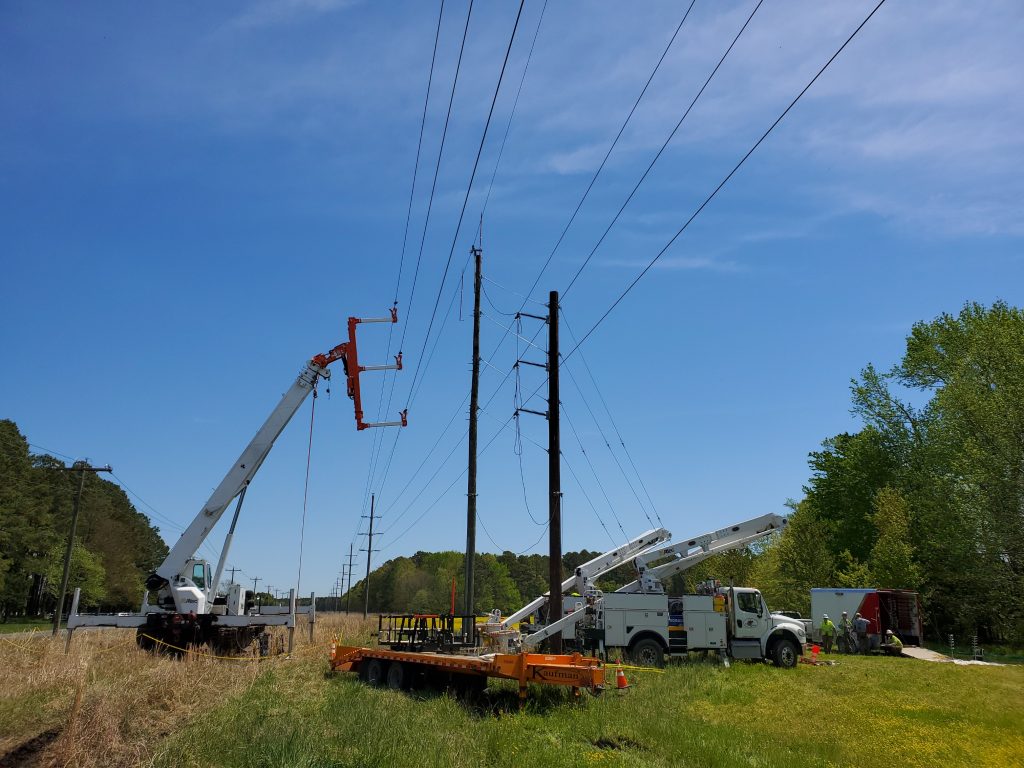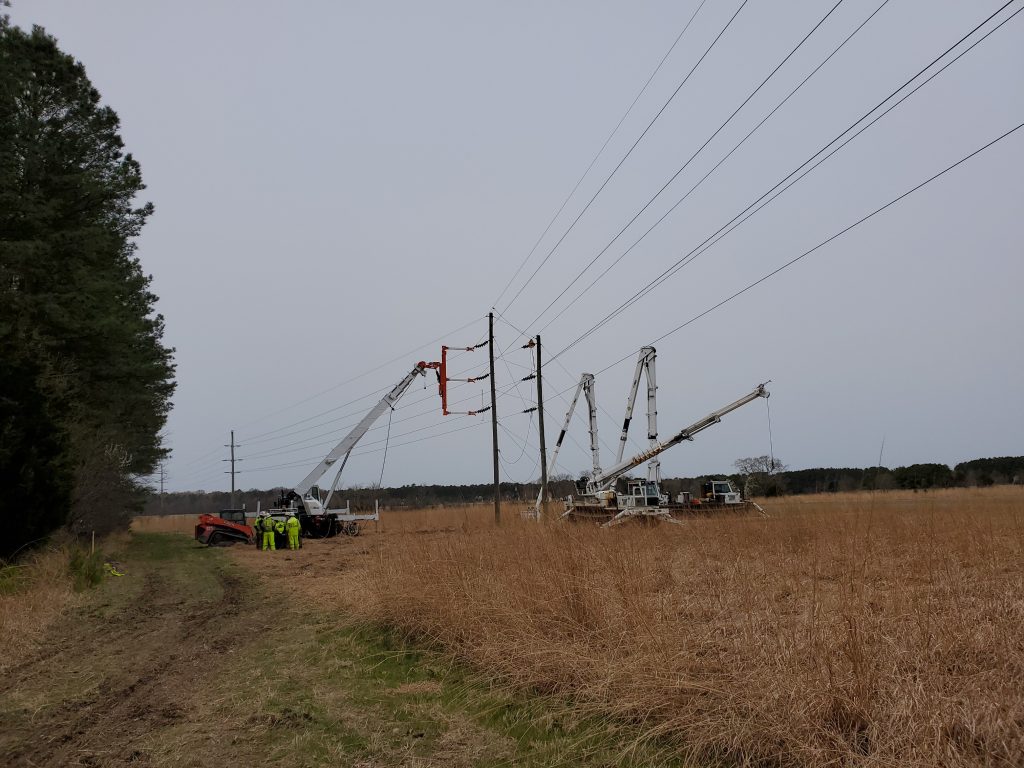By Luke Granger, Head of Compliance, AUI Power
AUI Power has carved a niche for itself in live-line work, even though energized services were not always part of its portfolio. With roots dating back to 1995 as a family-owned business of commercial electricians in Elkton, Maryland, doing primary voltage work for large plants, AUI Power was officially established in 2010. Today, AUI is a full-service electrical utility contractor specializing in transmission, distribution and substation construction/maintenance primarily for electrical utility companies in the Mid-Atlantic region. Over the years, the expansion of services has been the result of an increase in demand and AUI has taken advantage of these opportunities to grow its business while better serving its customers.
In fact, energized work is one of the more recent additions to AUI’s portfolio, which was again driven by demand, as more utilities push for energized work to reduce inconvenient and costly outages. Entering into this type of work, however, requires much planning, as safety and reliability are paramount to success. One of the other keys to success that we’ve discovered is the use of specialized equipment, which helps ensure that safety and reliability.
The primary equipment used by most utilities and contractors for energized work are hot sticks and hot links. While these useful tools get the job done, they do have their shortcomings. In addition to the time-consuming and labor-intensive setup that hot links require, AUI feels that they don’t instill a high level of confidence among utilities bidding out high voltage work.
AUI came across a different solution while purchasing a pole puller for removing transmission poles. The same company that manufactured the pole puller, LineWise, also offered the TLL-1300 Line Lifter, which is an insulated crane attachment used to support up to three energized lines. The TLL-1300 offers hydraulic articulation, extension and retraction with wire holders that adjust to support vertically or horizontally oriented conductors spaced anywhere from 6.5 to 14.5 feet apart. It features quick-attach insulators and wire holders to quickly hook onto wires and fly them out to a safe distance away from the linemen.
Manually adjustable line lifters are also available, but they require extra setup time to send a lineman up in a box to measure the distance between lines and then adjust the line lifter on the ground before the tool can be used. With hydraulic adjustment, the arms can be extended or retracted to match the spacing between conductors. Holding valves are included on all cylinders for added safety.
AUI has been using its LineWise TLL-1300 Line Lifter almost daily, mostly for insulator and structure change-outs. It has proven especially useful on a current project in eastern Maryland from Easton to Bozman, running corner structures from single-pole to two-pole structures for improved reliability. The line lifter provides the crew with the ability to easily hold energized lines safely out of the way while a new pole is being installed, and then the existing wires are moved back and installed on the new pole.
The line lifter used by AUI is rated for supporting three conductors up to 138kV. When needed, the insulators on the line lifter can be swapped out with ones rated up to 230kV for higher voltage work.
After purchasing the TLL-1300, LineWise held a classroom and three-hour field instruction session with AUI crews to ensure all were comfortable using the new tool. The biggest considerations when using it are to ensure the voltage and line weight are within safe limits of the equipment.
When planning lifts, it’s important to check the wire size and tension to verify the conductor weight. From there, crews must also verify that the line lifter and crane are both rated to support that weight. For instance, the TLL-1300 is capable of supporting three conductors up to 1,200 pounds each, or 3,600 pounds total, but the crane may need to be larger than anticipated as it must support the combined weight of the line lifter and conductors. AUI has two brackets for using the line lifter on two separate cranes. It’s recommended to have skilled crane operators who not only know how to operate the machinery well, but also understand the weight limits according to the load chart of the crane and boom position.
Other than careful planning for weight limits, the TLL-1300 is fairly self-explanatory and operates smoothly. It also provides AUI the ability to operate with fewer cranes on site. Instead of bringing in two pieces of equipment to hold three phases, the line lifter allows the crew to hold all three lines with just one crane, reducing costs and providing AUI with an advantage against competitors bidding for the same jobs.
Perhaps the biggest advantage, however, is less quantitative. AUI has found that the specialized line lifter provides utilities with peace of mind because it is generally perceived as more reliable than hot links. Customers have more confidence seeing the line lifter working versus seeing sticks up on the pole with lineman in the air installing the hot links. In fact, AUI has been awarded multiple jobs simply because customers know we have the specialized equipment for doing energized work.
Safety is another huge benefit, not only for AUI and its crew, but also for the customers. The TLL-1300 allows the crane to swing the energized lines a safer distance away from the work zone than is possible with hot links. Additionally, it only takes one crew member to hook the wires to the line lifter, which reduces the exposure to hazardous situations. Workers are more confident in their safety when working with the TLL-1300, and they’re excited to use the tool on the job because of the convenience it provides.
While the TLL-1300 has proved to be invaluable for AUI’s energized services, we have studied how the equipment can be used in other areas of the business, including the construction side. For now, however, it is used practically every day for live line work, where it brings convenience and speed to the job. Even more valuable, though, is the safety and reliability it brings to the operation, while it efficiently reduces man hours and often allows projects to finish ahead of schedule.
This article was featured in the Fall 2019 Issue of Powerlineman Magazine


Leave a Reply